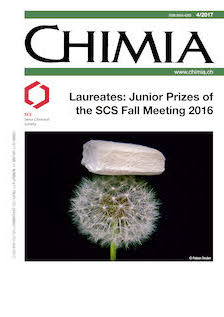Quantitative Nano-characterization of Polymers Using Atomic Force Microscopy
DOI:
https://doi.org/10.2533/chimia.2017.195Keywords:
Afm imaging, Atomic force microscopy, Mechanochemistry, Single molecule force spectroscopy, Single moleculesAbstract
The present article offers an overview on the use of atomic force microscopy (AFM) to characterize the nanomechanical properties of polymers. AFM imaging reveals the conformations of polymer molecules at solid– liquid interfaces. In particular, for polyelectrolytes, the effect of ionic strength on the conformations of molecules can be studied. Examination of force versus extension profiles obtained using AFM-based single molecule force spectroscopy gives information on the entropic and enthalpic elasticities in pN to nN force range. In addition, single molecule force spectroscopy can be used to trigger chemical reactions and transitions at the molecular level when force-sensitive chemical units are embedded in a polymer backbone.Downloads
Published
2017-04-26
Issue
Section
Scientific Articles
License
Copyright (c) 2017 Swiss Chemical Society

This work is licensed under a Creative Commons Attribution-NonCommercial 4.0 International License.
How to Cite
[1]
M. Radiom, C. Weder, K. M. Fromm, A. F. M. Kilbinger, P. Maroni, M. A. Ayer, M. di Giannantonio, P. Kong, S. Kozhuharov, M. Borkovec, Chimia 2017, 71, 195, DOI: 10.2533/chimia.2017.195.







